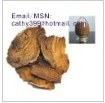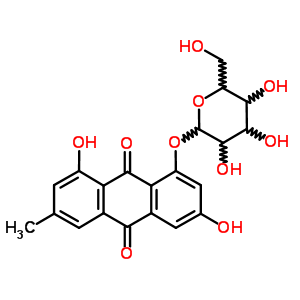Rhubarb root extract powder
111Category: Pharmaceuticals and Biochemicals/Herbal Plant Extract

CAS NO: 23313-21-5 EC NO: Molecular Formula: C21H20O10 Molecular Weight: 432.3775 Specification: Emodin:50%,98%,5:1,10:1 InChI: InChI=1/C21H20O10/c1-7-2-9-14(11(24)3-7)18(27)15-10(16(9)25)4-8(23)5-12(15)30-21-20(29)19(28)17(26)13(6-22)31-21/h2-5,13,17,19-24,26,28-29H,6H2,1H3/t13-,17-,19+,20-,21-/m1/s1 Packing: 25kg/fiber drum I.D.42CM x H52CM Product description:
-Product Name: Rhubarb root extract
-Brand: HUAKANG
-Model: HK120023
-Latin Name: Radix et Rhizoma Rhei L.
-Part of used: Root
-Appearance: Yellow fine powder
-Specification: Emodin:50%,98%,5:1,10:1
-Test method:HPLC /UV
-Certificate:ISO9001,GMP
Details:Rhubarb Root has a purgative action for use in the treatment of constipation, but also has an astringent effect too. It, therefore, has a truly cleansing action upon the gut, removing debris and then astringing with antiseptic properties as well. The primary chemical constituents of Rhubarb include anthraquinones, that contribute to the laxative and purgative properties of Rhubarb. Chinese research is investigating Rhubarb's ability to possibly inhibit cancer cells.
Function:
1. Rhubarb Root Extract is shown to improve digestion and increase the appetite.
2. Rhubarb Root Extract also helps heal ulcers, alleviate disorders of the spleen and colon, relieve constipation and help heal hemorrhoids and bleeding in the upper digestive tract.
3. Anti tumor activity and antibacterial activity also have immunosuppression, cathartic and anti-inflammatory effection.Uses: pharmaceutical, health food Synonyms: 1,6-Dihydroxy-3-Methyl-8-(��-D-Glucopyranosyloxy)-9,10-Anthraquinone; Molecular Structure: 



